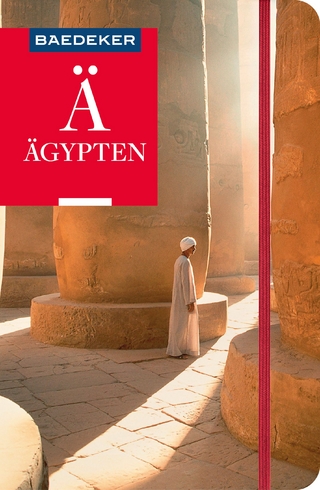
The Geology of Egypt
A Traveler's Guide
Seiten
2010
The American University in Cairo Press (Verlag)
978-977-424-785-9 (ISBN)
The American University in Cairo Press (Verlag)
978-977-424-785-9 (ISBN)
- Titel ist leider vergriffen;
keine Neuauflage - Artikel merken
Presuming no background in geology or related fields, this title provides an introduction to relevant geological concepts, presenting examples to illustrate how the Egypt's geological features influenced its civilization. Most examples are selected from the pharaonic period and Greco-Roman period.
Egypt is primarily a land of deserts and mountains, the habitable Nile Valley and Delta occupying less than five per cent of the country. Although the ancient Egyptians lived on only a small fraction of the land, they made extensive use of resources from the less hospitable areas, exploiting the opportunities and adjusting to the constraints of their physical environment. This work describes these features and more, providing a guide for the traveller to Egypt interested in learning about its history from a different perspective. The guidebook presumes no background in geology or related fields and provides an introduction to the relevant geological concepts, presenting examples to illustrate how the country's geological features influenced Egyptian civilization. Most examples are selected from the pharaonic period and Greco-Roman period, though many cases also illustrate how geological factors continue to have an impact on modern Egyptian society. The text is organized as a trip on the Nile from Lake Nasser downstream to the Delta, with chapters devoted to such popular sites as Aswan, Luxor and Giza. Also covered are the Eastern and Western Deserts, as well as the Sinai Peninsula.
Egypt is primarily a land of deserts and mountains, the habitable Nile Valley and Delta occupying less than five per cent of the country. Although the ancient Egyptians lived on only a small fraction of the land, they made extensive use of resources from the less hospitable areas, exploiting the opportunities and adjusting to the constraints of their physical environment. This work describes these features and more, providing a guide for the traveller to Egypt interested in learning about its history from a different perspective. The guidebook presumes no background in geology or related fields and provides an introduction to the relevant geological concepts, presenting examples to illustrate how the country's geological features influenced Egyptian civilization. Most examples are selected from the pharaonic period and Greco-Roman period, though many cases also illustrate how geological factors continue to have an impact on modern Egyptian society. The text is organized as a trip on the Nile from Lake Nasser downstream to the Delta, with chapters devoted to such popular sites as Aswan, Luxor and Giza. Also covered are the Eastern and Western Deserts, as well as the Sinai Peninsula.
Dr. Bonnie M. Sampsell is a retired college professor who has traveled to many parts of the world and studied Egyptology, archaeology, and geology extensively.
| Erscheint lt. Verlag | 1.2.2010 |
|---|---|
| Zusatzinfo | 36 colour photographs, 38 maps and figures, glossary |
| Verlagsort | Cairo |
| Sprache | englisch |
| Themenwelt | Reiseführer ► Afrika ► Ägypten |
| Naturwissenschaften ► Geowissenschaften ► Geologie | |
| ISBN-10 | 977-424-785-X / 977424785X |
| ISBN-13 | 978-977-424-785-9 / 9789774247859 |
| Zustand | Neuware |
| Haben Sie eine Frage zum Produkt? |
Mehr entdecken
aus dem Bereich
aus dem Bereich
Buch | Softcover (2023)
Reise-Know-How (Verlag)
23,50 €




